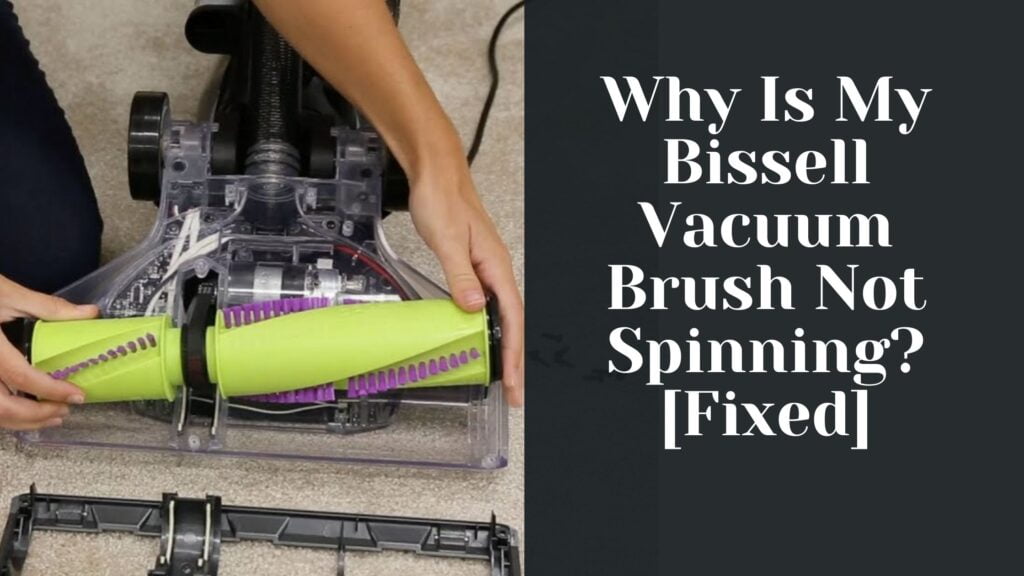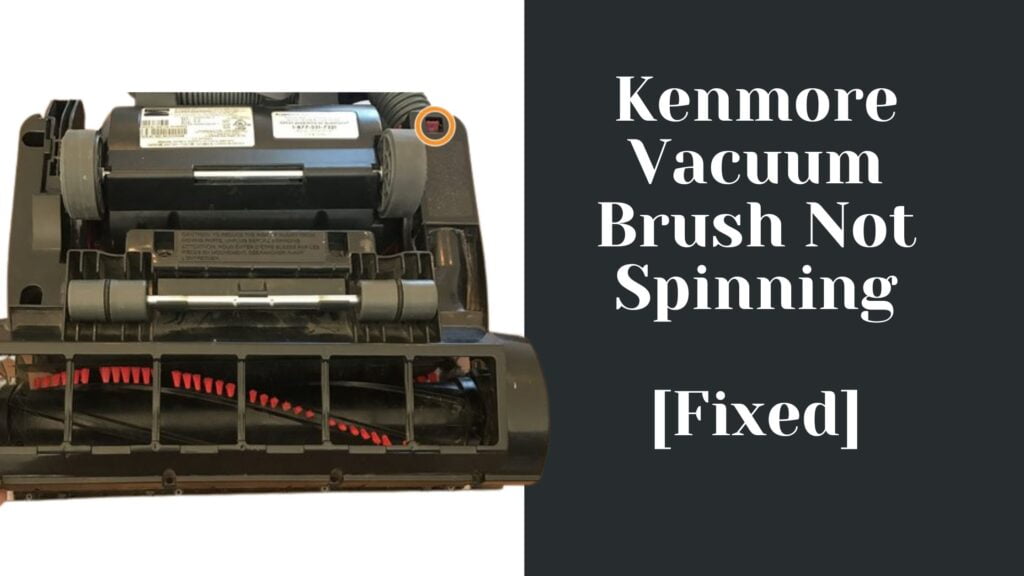If your Kirby vacuum cleaner has stopped running, it can be frustrating and inconvenient. However, there are several reasons why your vacuum cleaner may have stopped working. Troubleshooting the issue can help you identify the problem and find a solution.
One of the first things to check is the power source. Make sure the vacuum cleaner is properly plugged in and the outlet is functioning correctly. If the outlet is working, but the vacuum cleaner still won’t turn on, there may be an issue with the vacuum cleaner’s motor.
Another common reason why a Kirby vacuum cleaner may stop running is due to a problem with the fan and fan motor. It’s important to inspect the fan and motor for any damage or debris that may be causing the issue. Additionally, the drive motor and belt should be examined to ensure they are functioning properly. By troubleshooting these areas, you can often identify and fix the problem with your Kirby vacuum cleaner.
Key Takeaways
- Check the power source first if your Kirby vacuum cleaner has stopped running.
- Inspect the vacuum cleaner’s motor, fan and fan motor, and drive motor and belt to identify the problem.
- Troubleshooting these areas can often help you identify and fix the issue with your Kirby vacuum cleaner.
Troubleshooting Kirby Vacuum That Stopped Running
If your Kirby vacuum cleaner has suddenly stopped working, it can be frustrating. However, before you panic and send it for repair, there are a few things you can do to troubleshoot the issue. Here are some steps you can take to identify and fix the problem:
Check the Power Source
The first thing you should check is the power source. Ensure that the vacuum cleaner is properly plugged into the power outlet and that the power cord is not damaged. If the power cord is damaged, replace it immediately. Also, check the power switch to ensure it is turned on.
Inspect the Vacuum Cleaner’s Motor
If the vacuum cleaner is still not working, the motor may be the problem. Check the motor brushes to see if they are worn out. If they are, replace them. You can also use a multimeter to test the motor for continuity. If there is no continuity, the motor may need to be replaced.
Examine the Fan and Fan Motor
The fan and fan motor are critical components of the Kirby vacuum cleaner. If they are damaged, the vacuum cleaner may not work. Check the fan blade for any signs of damage or wear. If the fan blade is damaged, replace it immediately. You should also check the blower wheel for any damage.
Inspect the Drive Motor and Belt
The drive motor and belt are responsible for powering the brush roll. If the brush roll is not spinning, the drive motor or belt may be damaged. Check the belt for any signs of wear or damage. If the belt is damaged, replace it immediately. You can also use a multimeter to test the drive motor for continuity.
Check the Safety Switches
The Kirby vacuum cleaner has several safety switches that prevent injury or damage to the vacuum cleaner. Check the safety switch on the front of the unit to ensure it is engaged. You should also check the bag safety switch and the prevention safety switch. If any of these switches are not engaged, the vacuum cleaner may not work.
In conclusion, troubleshooting a Kirby vacuum cleaner that has stopped running can be a simple process. By following the steps outlined above, you can identify and fix the problem without damaging the vacuum cleaner. If you are unsure about any of the steps, consult the Kirby system’s manual or contact a professional for assistance.
Check the Power Source
If your Kirby vacuum cleaner has stopped running, the first thing you should check is the power source. Here are some steps to follow:
- Make sure the vacuum cleaner is plugged in and the power cord is securely connected to both the vacuum cleaner and the electrical outlet.
- Check the electrical outlet by plugging in another appliance to ensure that the outlet is functioning correctly.
- If the outlet is functioning correctly, check the power cord for any visible damage or fraying. If the power cord is damaged, it will need to be replaced.
- Check the on/off switch to ensure that it is in the “on” position. If the switch is in the “off” position, turn it on and try running the vacuum cleaner again.
- If the power source is not the issue, then the problem may be with the vacuum cleaner itself. In this case, you may need to consult the owner’s manual or contact a professional for assistance.
By following these steps, you can quickly and easily determine whether the power source is the cause of your Kirby vacuum cleaner’s malfunction.
Inspect the Vacuum Cleaner’s Motor
If your Kirby vacuum cleaner has stopped running, the motor could be the culprit. Here are some steps to inspect the motor:
Check the Motor Brushes
The motor brushes are small carbon blocks that transfer electricity to the motor. Over time, they can wear down and cause the motor to stop working. To check the motor brushes:
- Unplug the vacuum cleaner and remove the outer cover to access the motor.
- Locate the motor brushes on either side of the motor.
- Check the length of the brushes. If they are less than 1/4 inch, they need to be replaced.
- If the brushes are long enough, check for any damage or signs of wear.
- Use a multimeter to test the continuity of the brushes. If there is no continuity, replace the brushes.
Check the Continuity of the Motor
If the motor brushes are not the issue, the motor itself may have failed. To check the continuity of the motor:
- Unplug the vacuum cleaner and remove the outer cover to access the motor.
- Use a multimeter to test the continuity of the motor. Set the multimeter to the lowest ohms setting.
- Touch one lead of the multimeter to one of the motor terminals and the other lead to the other terminal.
- If the multimeter reads zero or near zero, the motor has continuity and is not the issue.
- If the multimeter does not read any continuity, the motor has failed and needs to be replaced.
By following these steps, you can determine if the motor is the reason why your Kirby vacuum cleaner has stopped running. If you are unsure about any of these steps, consult the owner’s manual or contact a professional for assistance.
Examine the Fan and Fan Motor
If your Kirby vacuum cleaner has stopped running, one of the possible causes is a problem with the fan and fan motor. The fan and fan motor are critical components of the vacuum cleaner that help generate suction to pick up dirt and debris. In this section, we will discuss how to examine the fan and fan motor to determine if they are causing the problem.
Check the Fan Blade
The fan blade is a component of the fan assembly that rotates to generate suction. If the fan blade is damaged or broken, it can cause the vacuum cleaner to stop running. To check the fan blade, follow these steps:
- Unplug the vacuum cleaner and remove the fan cover.
- Inspect the fan blade for any signs of damage or wear.
- If the fan blade is damaged or worn, replace it with a new one.
Check the Blower Wheel
The blower wheel is another component of the fan assembly that helps generate suction. If the blower wheel is damaged or clogged with debris, it can cause the vacuum cleaner to stop running. To check the blower wheel, follow these steps:
- Unplug the vacuum cleaner and remove the fan cover.
- Inspect the blower wheel for any signs of damage or wear.
- If the blower wheel is damaged or worn, replace it with a new one.
- Check the blower wheel for any debris or blockages. If there is debris, remove it carefully to prevent injury or damaging the fan.
It is also important to check the motor brush when examining the fan and fan motor. The motor brush is a component of the motor that helps conduct electricity. If the motor brush is worn or damaged, it can cause the vacuum cleaner to stop running. To check the motor brush, follow these steps:
- Unplug the vacuum cleaner and remove the motor cover.
- Inspect the motor brush for any signs of wear or damage.
- If the motor brush is worn or damaged, replace it with a new one.
By examining the fan and fan motor, you can determine if they are causing your Kirby vacuum cleaner to stop running. It is important to follow the steps carefully and take precautions to prevent injury and damage to the vacuum cleaner.
Inspect the Drive Motor and Belt
If your Kirby vacuum cleaner has stopped running, the drive motor and belt may be the cause of the problem. Here’s how to inspect them:
- Start by unplugging the vacuum cleaner and turning it over so that you can access the underside.
- Locate the drive motor and belt. The drive motor is the component that powers the brush roll, while the belt connects the motor to the brush roll.
- Check the belt for signs of wear and tear. If the belt is worn or broken, it will need to be replaced. You can refer to the manufacturer’s instructions for your specific model of Kirby vacuum cleaner to learn how to replace the belt.
- Test the drive motor by turning the vacuum cleaner back over and plugging it in. Turn the vacuum cleaner on and listen for any unusual noises or vibrations coming from the motor. If the motor is making unusual noises or vibrations, it may be damaged and will need to be replaced.
- If the motor and belt both appear to be in good condition, the problem may be with the brush roll. Check the brush roll for any obstructions or damage that may be preventing it from turning.
By inspecting the drive motor and belt, you can identify and fix many common problems with Kirby vacuum cleaners. If you’re unsure about how to inspect or replace these components, consult the manufacturer’s instructions or contact a professional for assistance.
Check the Safety Switches
If your Kirby vacuum suddenly stopped running, it is possible that one of the safety switches has been triggered. These switches are designed to prevent the vacuum from operating if certain conditions are not met. In this section, we will go over the three safety switches that you should check if your Kirby vacuum won’t turn on.
Check the Bag Safety Switch
The bag safety switch is located on the side of the vacuum where the bag attaches. If the bag is not properly attached, the switch will be triggered and the vacuum will not turn on. To check this switch, make sure the bag is securely attached to the vacuum. You can also try removing the bag and reattaching it to ensure a proper connection.
Check the Prevention Safety Switch
The prevention safety switch is located on the front of the vacuum. This switch is triggered when the vacuum is in an upright position. If the switch is triggered, the vacuum will not turn on. To check this switch, make sure the vacuum is in the proper position for operation. If the vacuum is in the upright position, try lowering it to the floor and see if that solves the problem.
Check the Safety Switch on the Front
The safety switch on the front of the vacuum is designed to prevent the vacuum from operating if the front nozzle is not attached. If the nozzle is not attached, the switch will be triggered and the vacuum will not turn on. To check this switch, make sure the front nozzle is properly attached to the vacuum. You can also try removing the nozzle and reattaching it to ensure a proper connection.
In summary, if your Kirby vacuum won’t turn on, it is important to check all of the safety switches. By following the steps outlined above, you can quickly identify and fix the problem, allowing you to get back to cleaning your floors with your trusty Kirby vacuum.
Frequently Asked Questions
How can I troubleshoot my Kirby vacuum if it suddenly stops working?
If your Kirby vacuum suddenly stops working, there are a few things you can check. First, make sure that the vacuum is properly plugged in and that the power outlet is working. If the vacuum is plugged in and the outlet is working, check the on/off switch to make sure it is in the “on” position. If the switch is in the “on” position and the vacuum still won’t turn on, there may be an issue with the motor.
What are some common reasons why a Kirby vacuum may keep shutting off?
There are several reasons why a Kirby vacuum may keep shutting off. One common reason is that the vacuum bag is full or clogged. Another reason may be that the brush roll is clogged with hair or debris. Additionally, the vacuum may be overheating due to a dirty filter or a clogged hose.
What steps can I take if my Kirby Sentria won’t turn on?
If your Kirby Sentria won’t turn on, there are a few things you can try. First, make sure that the vacuum is properly plugged in and that the power outlet is working. Next, check the on/off switch to make sure it is in the “on” position. If the switch is in the “on” position and the vacuum still won’t turn on, there may be an issue with the motor or the power cord.
Why might the green light not be on when I try to use my Kirby vacuum?
If the green light on your Kirby vacuum is not turning on when you try to use it, there may be an issue with the power cord or the switch. Check the power cord for any signs of damage or wear, and make sure that it is properly plugged in. If the power cord is in good condition and properly plugged in, check the on/off switch to make sure it is functioning properly.
How can I fix my Kirby vacuum if the brush roll is not spinning?
If the brush roll on your Kirby vacuum is not spinning, there may be a few different issues at play. First, check to make sure that the brush roll is not clogged with hair or debris. If the brush roll is clear, check the belt to make sure that it is not broken or worn. If the belt is in good condition, there may be an issue with the motor.
What is the process for replacing the on/off switch on a Kirby vacuum?
Replacing the on/off switch on a Kirby vacuum can be a bit tricky, so it may be best to take your vacuum to a professional for this repair. However, if you are comfortable working with electronics, you can find tutorials online that will walk you through the process step-by-step. Just be sure to follow all safety precautions and use caution when working with electrical components.




















